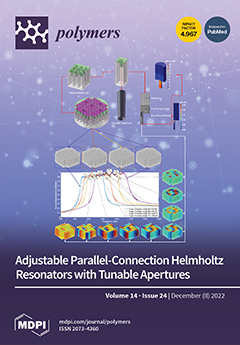Lithium-sulfur batteries (LSBs) have attracted extensive attention due to their high energy density and low cost. The separator is a key component of LSBs. An excellent LSBs separator requires not only good electrolyte wettability, but also high thermal stability, good tensile mechanical properties,
[...] Read more.
Lithium-sulfur batteries (LSBs) have attracted extensive attention due to their high energy density and low cost. The separator is a key component of LSBs. An excellent LSBs separator requires not only good electrolyte wettability, but also high thermal stability, good tensile mechanical properties, green environmental protection potential and enough inhibition of shuttle effect. In this paper, composite separator Bacterial cellulose/Ketjen black-TiO
2 (BKT) was prepared by coating the green and environmentally friendly bacterial cellulose (BC) substrate with KB-TiO
2 material. BKT not only demonstrates higher electrolyte wettability, but also displays thermal stability and tensile resistance to enhance the safety of the battery. The high ratio of TiO
2 and KB on the BKT surface provides chemical and physical adsorption of lithium polysulfides (LiPSs), thereby inhibiting the shuttle effect and increasing the cycle life of LSBs. The secondary current collector formed by TiO
2 and KB can also reactivate the adsorbed LiPSs, further improving the capacity retention rate of the battery. Therefore, the LSBs assembled with the BKT separator exhibited an initial discharge capacity of 1180 mAh × g
−1 at a high current density of 0.5 C, and maintained a specific discharge capacity of 653 mAh × g
−1 after 100 cycles was achieved. Even at 2.0 mg × cm
−2 sulfur areal density and 0.1 C current density, the BKT separator based battery still has an initial discharge specific capacity of 1274 mAh × g
−1. In conclusion, BKT is a promising lithium-sulfur battery separator material. sulfur areal densities.
Full article






